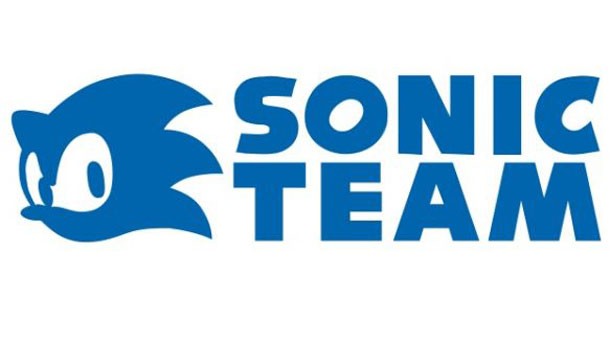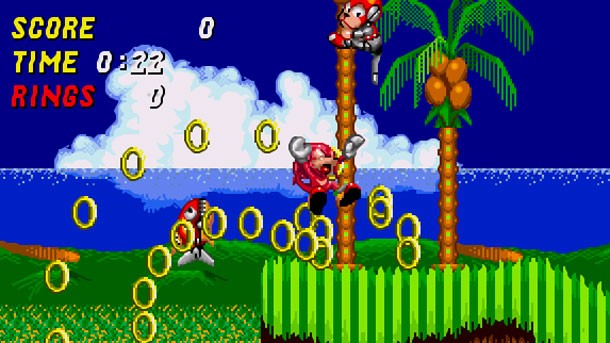Developer Salute – Sonic Team Circa Early '90s

In the same way some football fans fondly remember the Chicago Bears’ spectacular 1985 season, or music connoisseurs might prefer The Beatles’ studio years, I have a special place in my heart for 16-bit era Sonic Team. Here’s my salute to the development team behind the blue hedgehog’s formative years.
I first encountered Sonic one Christmas in the early 1990s. The Sega Genesis was out one full year before Sega’s new mascot graced the system. Sonic the Hedgehog became a packed in system-seller shortly after its release. The gifted Genesis was destined for my older brother, but I quickly took over the system after her declared he’d “outgrown” video games (hah!). I was raised on the Atari 2600, Apple II, and the Sega Master System, but entering Green Hill Zone teleported me into a new level of gaming fandom.
I had played Mario and Mega Man and plenty of other platformers before Sonic, but the world Sonic Team created seemed brighter and more alive. The simple jump and roll gameplay sucked me in, removing the complexity of Super Mario World’s power-ups and cape flying from the mix (I was a dumb eight-year-old). Even at my young age I appreciated Dr. Robotnik’s consistent presence, showing up with a new contraption at the end of each level gave the game a Saturday morning cartoon feel. Sonic the Hedgehog may have been the first game I ever beat, and much of the credit is owed to Sonic Team for its intuitive levels design and nearly bug-free gameplay.
Sonic Team’s follow-up titles successfully iterated on the first game’s fun foundation. Sonic 2 added in a co-op partner with Tails and boosted Sonic’s speed with the spin dash. Sonic 3 introduced in the ability to save your game and let a second player use Tails to fly Sonic to new heights. Sonic CD added in a time travel element for Genesis owners lucky enough to own the Sega CD add-on. Then Sonic & Knuckles broke my young mind with its lock-on technology. Being able to retroactively play as Knuckles, the gliding, wall-climbing Echidna in Sonic 2 and Sonic 3 still amazes me. In a sense, Sonic Team developed add-on content for consoles years before it became the norm.

Knuckles in Sonic the Hedgehog 2
The 16-bit era Sonic Team did great work with the memorable mascot, but another obscure platformer deserves mention: Ristar. Launching near the end of the Sega Genesis’ lifespan, Ristar was the swan song of Sonic Team’s heyday. The developer abandoned the formulaic jump-based combat of most platformers in exchanged for a quirky grabbing mechanic. Ristar reaches out to grab his enemies and headbutts them into oblivion. The adorable star also uses his stretchy arms to swing around poles and climb to new heights. Ristar represents Sonic Team’s ability to deliver a fresh, original experience outside the confines of a familiar framework.
Shortly after the release of Sonic & Knuckles, one of the core creators of the series, Yuji Naka, moved into a producer role at Sega. Other key Sonic Team personnel also shifted throughout the years, leading to a development branch with a different flavor. For me, Sonic Team soured going into the 3D realm. The flight-based, on-rails Sega Saturn title Knights Into Dreams didn’t grab me, and the charm of Sonic Adventure wore off quickly. Sonic Team struggled to live up to its legacy in the following generations, with low points like 2006’s Sonic the Hedgehog and Sonic the Hedgehog 4 Episode II to name a few.
Despite waning overall quality, Sonic Team’s games continue to attract young audiences and remain a strong pillar for Sega. The upcoming Sonic Lost World looks promising, but the Super Mario Galaxy-inspired gameplay is a far cry from the series’ Genesis origins. Thankfully Sonic Teams’ early ‘90s library has aged wonderfully and the titles are widely available for download on modern systems (save for Ristar). I raise my dusty bottle of Crystal Pepsi in celebration of Sonic Team’s ‘90s legacy.

Get the Game Informer Print Edition!
Explore your favorite games in premium print format, delivered to your door.
- 10 issues per year
- Only $4.80 per issue
- Full digital magazine archive access
- Since 1991









